the place where Paleontology and Paleoanthropology meets Philately
Switzerland
Fossils and reconstructions of prehistoric animals and plants, Natural History Museums on stamps and postmarks of Switzerland
| << previous country | back to index | next country >> |
Contents:
- Country overview
- Philately of Switzerland
- Official stamps of Switzerland related to Paleontology
- Other stamps of Switzerland to consider
- Commemorative postmarks of Switzerland related to Paleontology
- Other postmarks of Switzerland to consider
- References
- Acknowledgements
Switzerland officially the Swiss Confederation (Latin: Confoederatio Helvetica, hence its abbreviation CH), is a federal republic consisting of 26 cantons, with Bern as the seat of the federal authorities.
The country is situated in Western Europe, where it is bordered by Germany to the north, France to the west, Italy to the south, and Austria and Liechtenstein to the east.
Switzerland is a landlocked country geographically divided between the Alps, the Central Plateau and the Jura, spanning an area of 41,285 km2.
While the Alps occupy the greater part of the territory, the Swiss population of approximately 7.9 million people concentrates mostly on the Plateau, where the largest cities are to be found. Among them are the two global cities and economic centers of Zurich and Geneva. [R1]
The first stamps used in Switzerland were issued by the cantons of Zürich, Geneva and Basel for their own use, with the first federal issues coming several years later.
The adoption of the federal constitution in 1848 made it practical to issue confederation-wide stamps, and the first of these came out in 1850 (the exact date is uncertain).
All used the same basic design, a Swiss cross surmounted by a posthorn, but there were a number of variations. [R2]
Official stamps of Switzerland related to Paleontology: fossils and reconstructions of prehistoric animals and plants
| 31.05.1958 Pro Patria "For mothers in distress" campaign: Minerals and Fossil [1] | 01.06.1959 Pro Patria "For Swiss abroad and the foreign secretary of the Swiss-NHG" campaign: Minerals and Fossil [1] | |
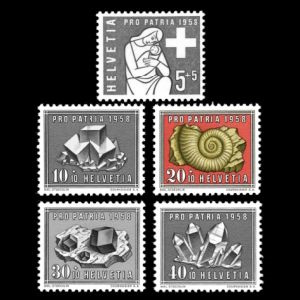 |
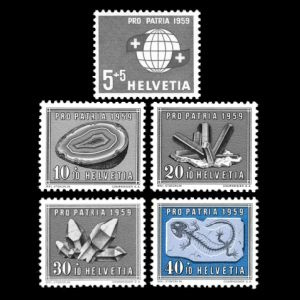 |
|
| 01.06.1960 Pro Patria "For the scholarship fund for young people in vocational training" campaign: Minerals and Fossil [1] | 01.06.1961 Pro Patria "For cultural purposes" campaign: Minerals and Fossil [1] | |
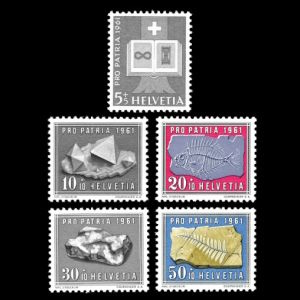 |
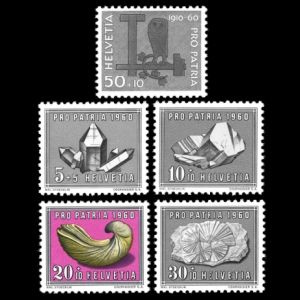 |
|
| 07.09.2004 "UNESCO World Heritage: Monte San Giorgio" | 03.09.2010 "Dinosaurs of Switzerland" | 05.03.2015 "Ammonite" |
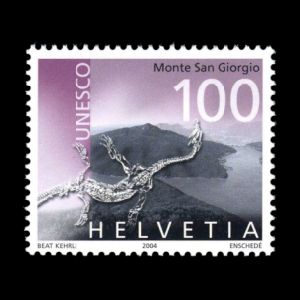 |
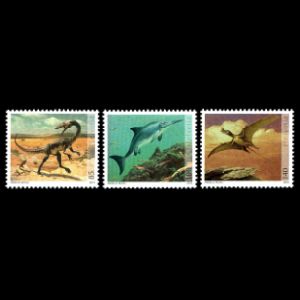 |
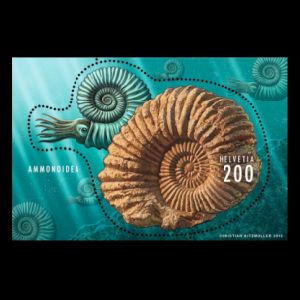 |
Notes:
[1] Between 1958 and 1961, the Swiss Post in cooperation with the Pro Patria Organization issued four semi-postal stamp sets.
Each set showed stylized representations of fossils and minerals from the collections of local museums.
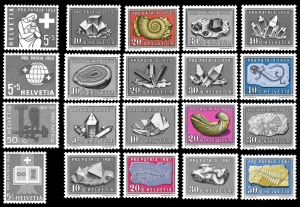
|
| Fossils on Pro Patria stamps of Switzerland 1958-1961 |
Pro Patria is a Swiss patriotic and charitable organization.
Its purpose is to give meaning to the Swiss national holiday, 1 August, by collecting donations to benefit social and cultural works of national public interest.
One of the methods the organization uses to collect donations is the issue of semi-postal stamps.
The additional amount paid for each sold stamp transferred to the organization.
The first stamp set was issued in 1938.
All four sets contain five stamps: one stamp with a logo of the Pro Patria campaign and four stamps showing minerals and fossils.
Actually, these are the first semi-postal stamps with a paleontological context ever issued.
The set from 1961, distinguished from others, contains two fossil stamps: a fish and a plant.
Both are the first stamps in their category.
The fish is very likely Scorpaena porcus and the fern plant is probably Asterotheca meriani.
Asterotheca is a genus dating from the Permian period 299–252 MYA.
It grew in humid and swampy locales.
Other stamps of Switzerland to consider: Natural History Museum
| 18.02.1982 "Museum of Natural History in Bern" [A1] | ||
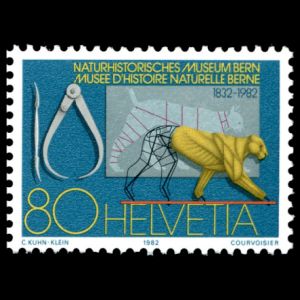 |
|
|
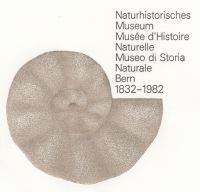 |
| Ammonite on a cachet of FDC with Museum of Natural History in Bern stamp of Switzerland 1982. |
Notes:
[A1] The Natural History Museum Bern was officially founded in 1832.
In 1936 it moved into a new building in Bernastrasse deemed an excellent example of the "Neue Sachlichkeit" style.
The building was extended in 1998.
The museum has 5100 square metres of exhibition space and an international reputation founded initially on its historical dioramas.
The museum's collection contains around 4 million objects, include fossils.
One of these fossils, an ammonite, shown on the cachet of the FDC (see on the right). [R4]
Commemorative postmarks of Switzerland related to Paleontology: fossils, dinosaurs and other prehistoric animals, paleontologists
Legend is here| 01.08.1985 "Visit Geneva Museums" [Sp] - |
12.10.1987 "Fossils and Plants of San Giorgio" [Sp] - |
01.12.1988 "Geneva Museums" [Sp] |
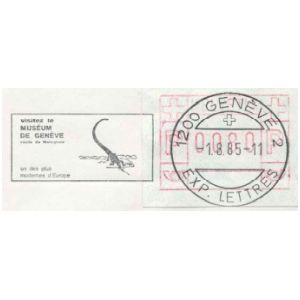 |
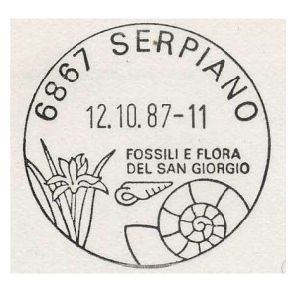 |
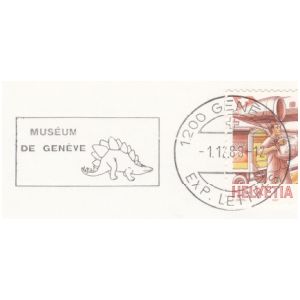 |
| xx.xx.1988 "150th anniversary of University of Neuchatel: Louis Agassiz" [Sp] [PM1] - |
08.06.1990 "Exhibition of Chinese Dinosaurs in Museum of Basel" [Sp] | 02.05.1991 "Geneva Museums: Dinomation 91" [Sp] |
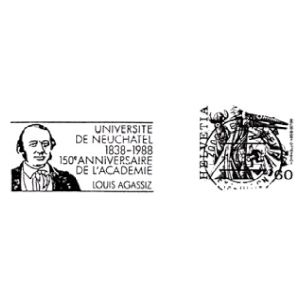 |
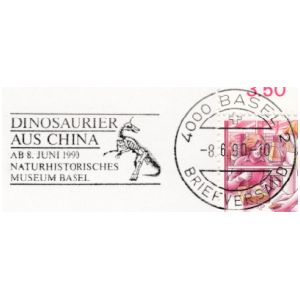 |
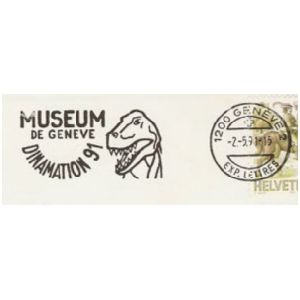 |
| 29.05.1995 "Saurier Museum in Frick" [PM] [DU] - |
07.09.2004 "Mount San Giorgio - UNESCO World Heritage" [FDC] | xx.xx.2007 "Saurier Museum in Frick" [PM] [DU] - |
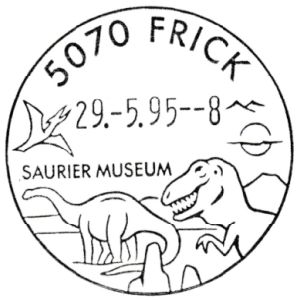 |
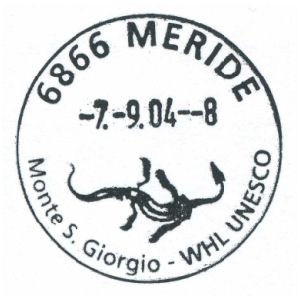 |
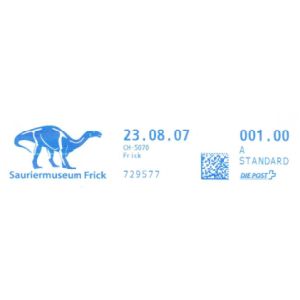 |
| xx.xx.2010 "Saurier Museum in Frick" [PM] [DU] [N] - |
03.09.2010 "Dinosaurs of Switzerland" [FDC] | 03.09.2010 "LUNABA 10 - Stamps tell stories" [Sp] - |
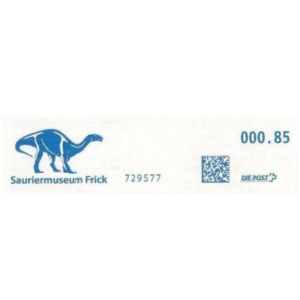 |
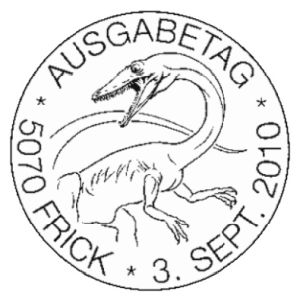 |
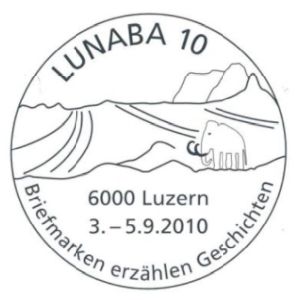 |
| 29-31.10.2010 "International Stamps Show in Sindelfingen, Germany" [Sp] - |
13.10.2012 "Mount San Giorgio - UNESCO World Heritage" [Sp] | 05.03.2015 "Ammonite" [FDC] |
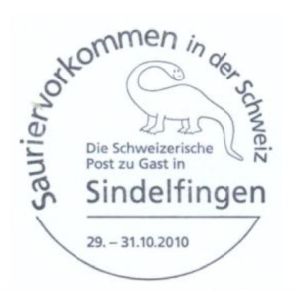 |
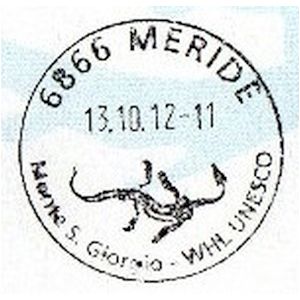 |
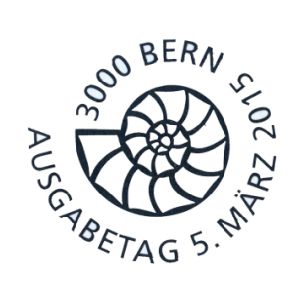 |
| 13.05.2015 "Ammonite" [Sp] - |
||
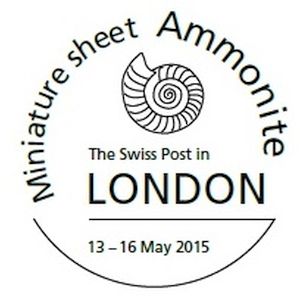 |
|
|
Notes:
[PM1] Jean Louis Rodolphe Agassiz (1807 - 1873) was a paleontologist, glaciologist, geologist and a prominent innovator in the study of the Earth's natural history.
In 1837 Agassiz was the first to scientifically propose that the Earth had been subject to a past ice age.
In the same year, he was elected a foreign member of the Royal Swedish Academy of Sciences. [R5]
Other postmarks of Switzerland to consider: contributors to Paleontology science
Legend is here| ?.1970 "Mammuth Shop" [Pm] | 25.01.1977 "25th anniversary of Swiss Topical Society: Johann Jakob Scheuchzer (1672-1733)" [Sp] [PMO1] | |
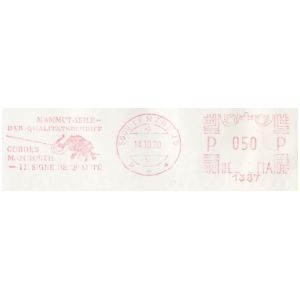 |
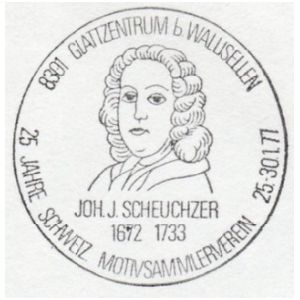 |
|
Notes:
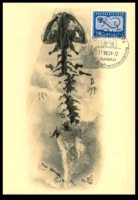
|
| Fossil of Salamander Andrias scheuchzeri on stamp and Maxicard of Switzerland 1959 MiNr.: 678, Scott: 286 |
In his work Lithographia Helvetica, he considers fossil remains as “the results of nature” or as the results of a global flood.
The fossilized skeleton found in a quarry near Baden, he described as the remains of a human witness of the flood (Homo diluvii testis).
For many years, this information was considered as confirmation of the biblical idea of the Flood, and only a few decades after the death of Scheuchzer, in 1811, the French naturalist Georges Cuvier reviewed the samples found and showed that in reality they are the skeleton of a large prehistoric salamander, described by him under the name Salamandra scheuchzeri (modern name - Andrias scheuchzeri). [R3]
References:
- [R1] Switzerland: Wikipedia, FlagCounter
- [R2] Postal History and Philately of Switzerland: Wikipedia, Pro Patria.
- [R3] Johann Jakob Scheuchzer: Wikipedia.
- [R4] The Natural History Museum Bern: official website, Wikipedia.
- [R5] Jean Louis Rodolphe Agassiz: Wikipedia.
Acknowledgements:
Many thanks to Dr. Peter Voice from Department of Geological and Environmental Sciences, Western Michigan University, for the draft page review and his very valuable comments.
| << previous country | back to index | next country >> |